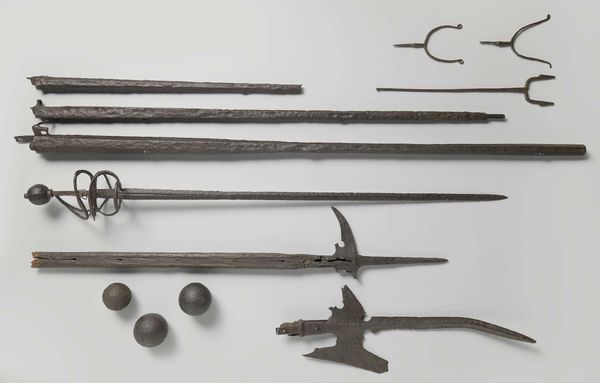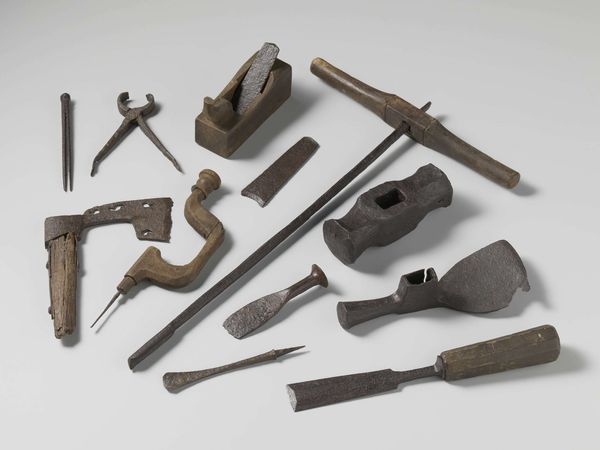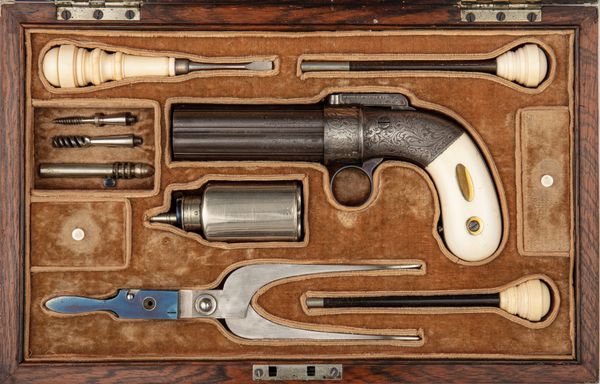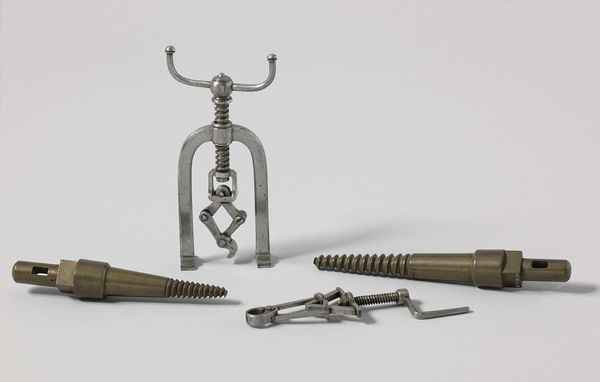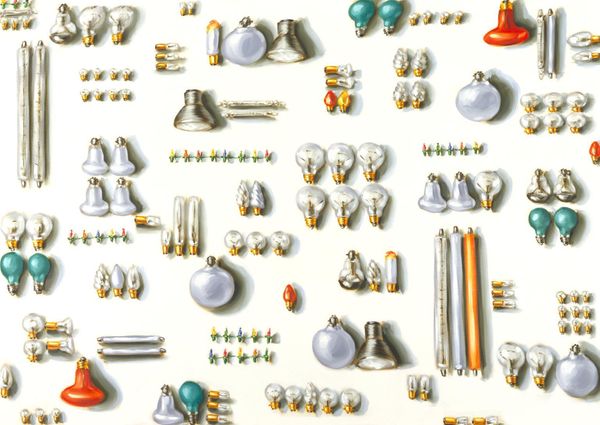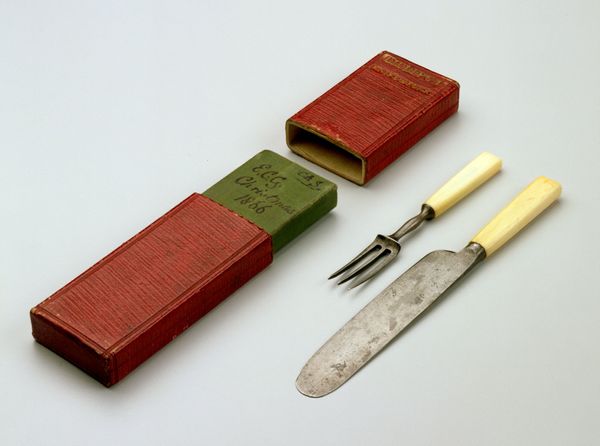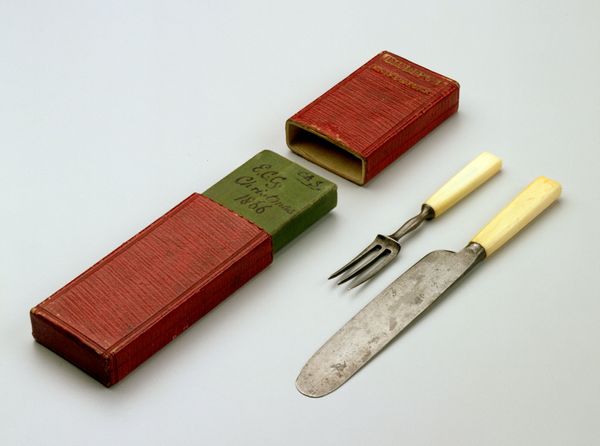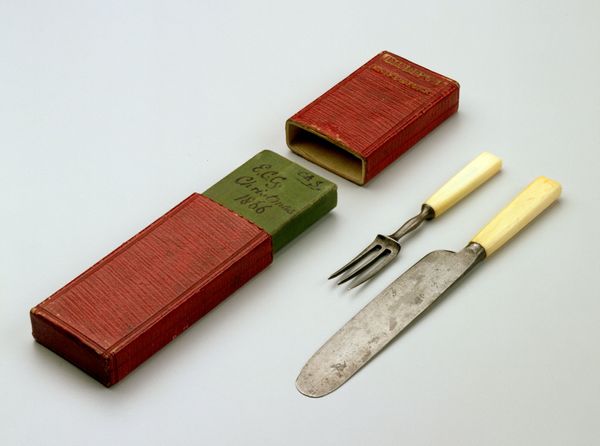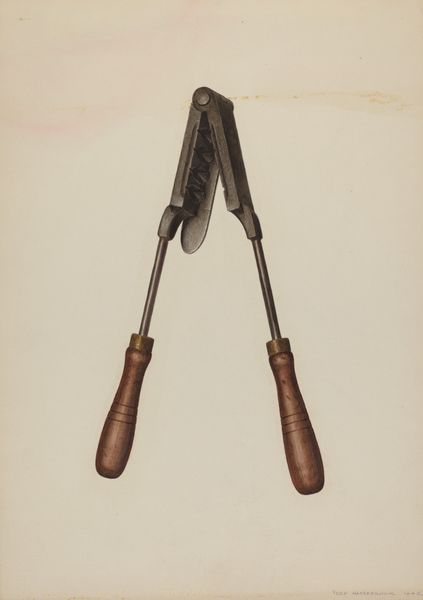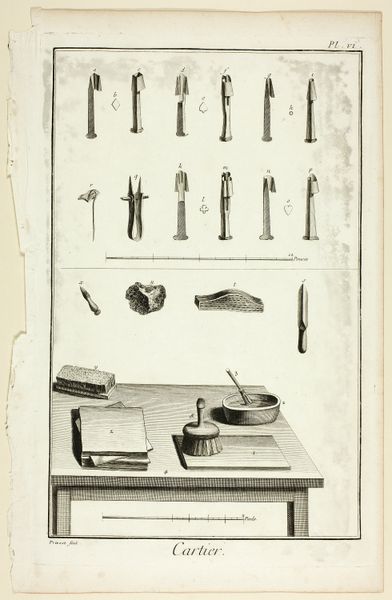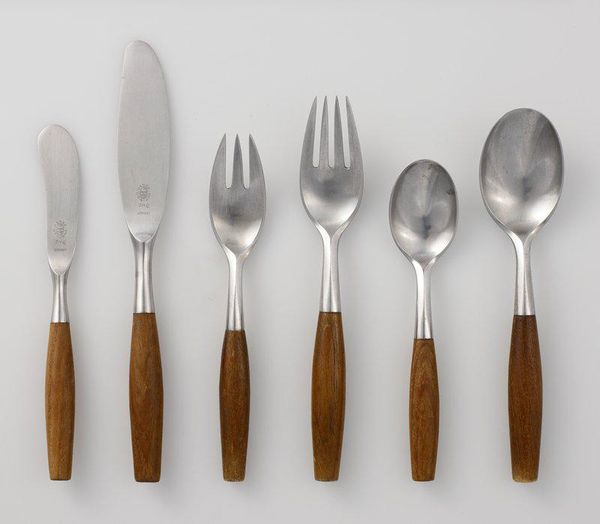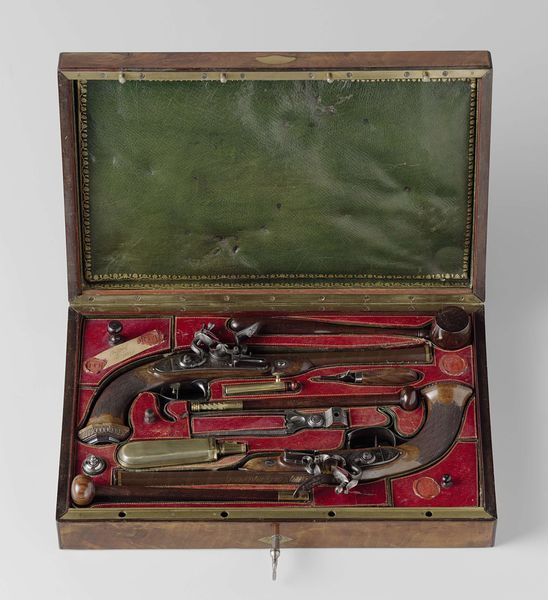
Set of Sixty-Two Engraving Tools of Louis D. Nimschke (1832–1904) 1800 - 1900
0:00
0:00
print, metal, wood, engraving
#
16_19th-century
# print
#
metal
#
wood
#
engraving
Dimensions: Hammer (a): L. 11 1/2 in. (29.21 cm); head, 3 1/16 x 9/16 in. (7.78 x 1.43 cm); hammer (b): L. 8 11/16 in. (22.1 cm); head, 2 3/8 x 13/32 in. (6 x 1 cm); hammer (c): L. 8 15/16 in. (22.7 cm); head, 2 1/32 x 3/8 in. (5.16 x 0.95 cm); hammer (d): 9 3/4 in. (24.77 cm); head 2 5/32 x 9/16 (5.48 x 1.43 cm); face Diam. 5/8 in. (1.59 cm); hammer (e): L. 8 3/8 (21.27 cm); head, 1 5/8 x 13/32 in. (4.13 x 1.03 cm); hammer (f): L. 8 13/16 in. (22.38 cm); head 2 1/16 x 9/32 in. (5.24 x 0.71 cm); chisel (g): L. 12 in. (30.48 cm); blade, 7 5/16 x 13/16 in. (18.57 x 2.06 cm); punch (h): L. 7 3/8 (18.73 cm); shaft at base, 4 29/32 x 7/32 in. (12.46 x 0.56 cm); planisher (i); L. 7 1/16 (17.94 cm); blade L. 3 in. (7.62 cm); planisher (j): L. 7 25/32 in. (19.76 cm); blade, 3 27/32 x 1/2 in. (9.76 x 1.27 cm); awl (k): L. 5 1/2 in. (13.97 cm); shaft L. 2 7/8 in. (7.3 cm); file (l): L. 8 1/16 in. (20.48 cm); blade, 4 1/2 x 3/8 in. (11.43 x 0.95 cm); file blade (m): L. 5 1/4 in. (13.34 cm); file blade (n): L. 7 9/32 in. (18.49 cm); file blade (o): L. 5 1/2 in. (13.97 cm); file blade (p): L. 5 3/8 in. (13.65 cm); file blade (q): 7 13/16 cm (19.84 cm); band/channel engraver (r): L. 6 3/8 in. (16.19 cm); graver L. 3 27/32 in. (9.76 cm); guide L. 3 1/4 in. (8.26 cm); guide W. 5/16 in. (0.79 cm); graver and screwdriver set (s): L. 5 3/8 in. (13.65 cm); ferrule L. 1 7/8 in. (4.76 cm); nine screwdriver tips, W. 3/32–3/16 in. (0.24–0.48 cm); wood tool handle (t): L. 2 9/16 in. (6.51 cm); wood tool handle (u): L. 3 13/16 in. (9.68 cm); wood mallet (v): L. 12 3/8 in. (31.43 cm); head Diam. 2 1/4 in. (5.72 cm); head H. 2 17/32 in. (6.43 cm); graver (w): L. 3 1/2 in. (8.89 cm); graver (x): L. 6 in. (15.24 cm); graver (y): L. 5 5/8 in. (14.29 cm); graver (z): L. 3 1/32 in. (7.70 cm); gravers (aa–aaa): various sizes; saw blade (bbb): L. 5 7/8 in. (14.92 cm); W. 3/8 in. (0.95 cm); straight edge with button handle (ccc): L. 7 7/8 in. (20.00 cm); W. 11/16 in. (1.75 cm); straight edge (ddd): L. 8 in. (20.32 cm); W. 5/8 in. (1.59 cm); pliers (eee): L. 5 5/8 in. (14.29 cm); semicircular punch (fff): L. 3 3/4 in. (9.53 cm); caliper (ggg): L. 4 3/8 in. (11.11 cm); caliper (hhh): L. 5 5/8 in. (14.29 cm); caliper (iii): L. 7 in. (17.78 cm)
Copyright: Public Domain
This is a set of sixty-two engraving tools made by Louis Daniel Nimschke, a master engraver, in the late 19th or early 20th century. These tools—hammers, chisels, gravers, and pliers—aren't merely functional; they are potent symbols of craftsmanship, each carrying a history of human ingenuity. Consider the hammer: a primal instrument, its form echoes through millennia, from the stone axes of our ancestors to the forging of Excalibur, the sword of King Arthur. The hammer, a symbol of power, creation, and destruction, transcends its utilitarian purpose. Here, arranged meticulously, these tools evoke a sense of order and control, yet their sharp edges and points hint at the potential for disruption and transformation. Like recurring motifs in a dream, these tools remind us that creativity and destruction are entwined, echoing through time in an unending cycle. Each tool, with its unique form and function, holds a story, a memory of the hands that wielded it, and the art it helped create.
Comments
No comments
Be the first to comment and join the conversation on the ultimate creative platform.
